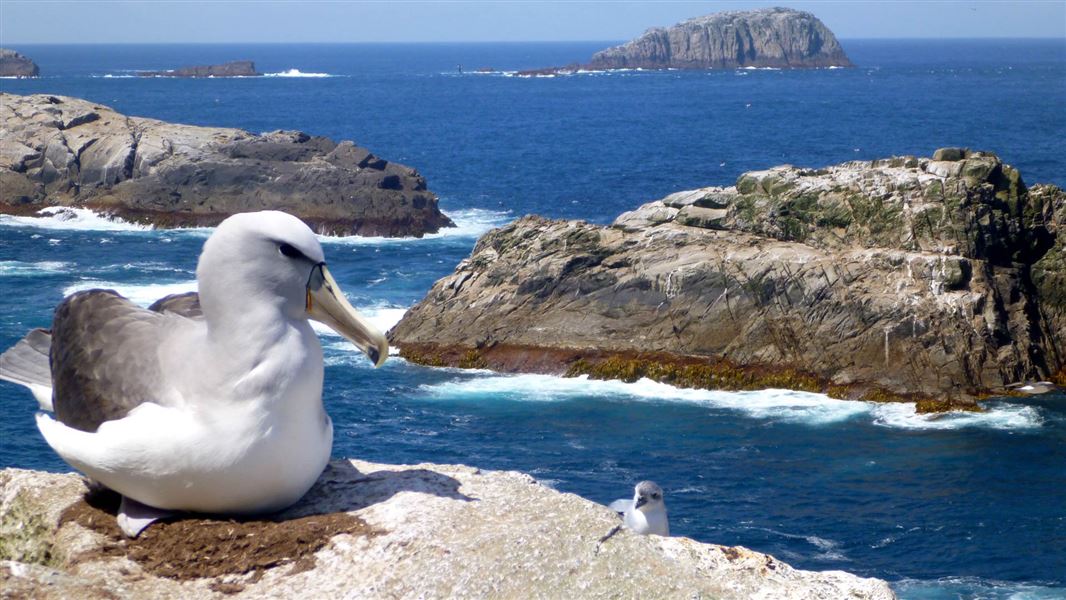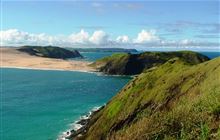
Introduction
New Zealand's offshore islands are isolated areas of land within New Zealand’s Exclusive Economic Zone.The islands are spread over 2,800 km – from the almost subtropical Kermadec Islands to the subantarctic Campbell Island group.
Importance of our offshore islands
With little disturbance from pests, the islands are rich with biodiversity. Islands that were never reached by pest mammals (such as rats) are the best examples of relatively unmodified ecosystems in New Zealand.
Over 50 islands are Nature Reserves. These important reserves are the sites for internationally acclaimed conservation projects, for species such as black robin, kakapo and tuatara.
Our offshore islands contain one of the world's most diverse range of seabirds – from tropic birds and boobies in the north, to numerous species of albatrosses and penguins in the south.
The islands are the last refuges for some animals and rare plants. These include tuatara, numerous species of lizards including Duvaucel’s gecko, and large invertebrates such as wetapunga and Mercury Island tusked weta. Some plants in the Three Kings Islands have been reduced to one or two individuals.
Our role
DOC manages about 220 islands larger than 5 ha, and hundreds of smaller islands and rock stacks.
Pests have been removed from most of the island nature reserves, and the forests and wildlife are now being restored. Over 100 islands are now free of pests.
DOC and other conservation groups continue to restore and protect New Zealand's offshore islands.
DOC manages some of New Zealand's offshore islands and you can visit many of them.
Island restoration aims to rebuild communities of native plants and animals.
New Zealand's subantarctic islands are among the world’s least modified environments and home to diverse and abundant animals and plants.
The Chatham Islands are located 800 km south-east of Wellington, and contain several of the world's most threatened bird and plant species.
Restoration progress is being made on some of the Coromandel's offshore islands including Cuvier Island, the Mercury Islands and the Aldermen Islands. These islands are all predator free, and no public access is allowed on them to protect their biodiversity heritage.
Te Hiku/Far North islands are home to many rare plants, skinks, and a variety of sea and shore birds. The islands are strictly 'no landing zones'.





